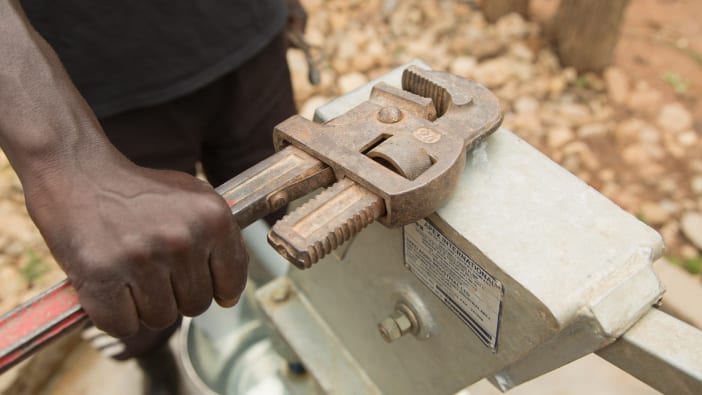By Richard Franceys.
The provision of clean water for drinking, and the safe disposal of human waste, are vital for human health. The Director-General of the World Health Organisation has said that the number of water taps per 1,000 persons is a better indication of health in a country than the number of hospital beds.
At present, half the children in the low income countries do not have clean water. Only one in three has safe sanitation. To overcome this problem is a very big task and it is now understood that everybody has to be involved in solving it.
Governments and their supporting agencies cannot do all the work. For, when they try to do it for people, the system often breaks down after some months and nobody knows how to get it going again. The people who are going to be using a clean water supply or sanitation system are the most important people to be involved in planning it.
The children in any community can play a vital role in helping their parents plan and organise the new development. In particular, they can assist when gathering the information that is required to plan a good system.
Some of the first things an engineer who is designing improved facilities will ask are:
- Where do people get water from at present?
- How much water do families use?
- How do they carry the water?
- How do they store the water?
All these questions can take a long time to answer when there are only a few adults to go around asking. But when all the children are involved in a way that is fun for them, the answers come quickly. One community development worker, David Drucker, has introduced games, to encourage the children to look for every conceivable water source in the surrounding area. Games obviously must be organised so that people are not offended, and so that the information gathered is as accurate as possible. The children could work in pairs or teams, leaving some kind of marker, or “secret sign”, at each source discovered so that the same source is not claimed more than once. Some kind of points system could be worked out for each water source discovered, with, maybe, a reward for the winning pair or team. All the information from this game should be bought together and displayed on the largest possible area on which an outline map of the village or community can be marked out, for example – the school playground, a market square or the side of a house. The map could be outlined with chalk, stones or scraped into the dry earth. The children could make models with mud, coconut shells or cardboard. Then they could fill in the map, marking all the water sources.
An enterprising school teacher might use this type of game to teach and link many aspects of the curriculum which the school needs to teach anyway – map making, handicrafts, health and hygiene, essay writing and charts.
Children could be asked to write on: “How water is used each day in my family”, describing where the water comes from, how it is collected and stored, how much is used for different purposes and any changes at different times of the year.
These ideas could be used for many other “games”. For example, Children can be taught the good points of a latrine and asked to find all the good latrines in the village. Children could be taught about the dangers of dirty water supplies and asked to mark water sources which could be a danger to health. For example, they would be looking for cattle drinking, people bathing, washing clothes, open wells, and children using the water as a toilet.
If this information is taken away by the planner, then probably the desire for change will disappear with the information. However, by bringing all this information together on a large map which everyone can see, with the water sources, latrines and danger areas clearly marked, this could encourage a lot of community discussion about how to solve the problems. The whole village could decide where water-pipes and standposts, or wells, might be placed.
The project or game does not have to end with the planning stage. The children can continue to be involved in checking that the improvements are working and making sure that their village stays free of environmental health risks.
Richard Franceys, who previously worked for TearFund in Sudan, is a water engineer in the Water, Engineering and Development Centre, Loughborough University of Technology.








